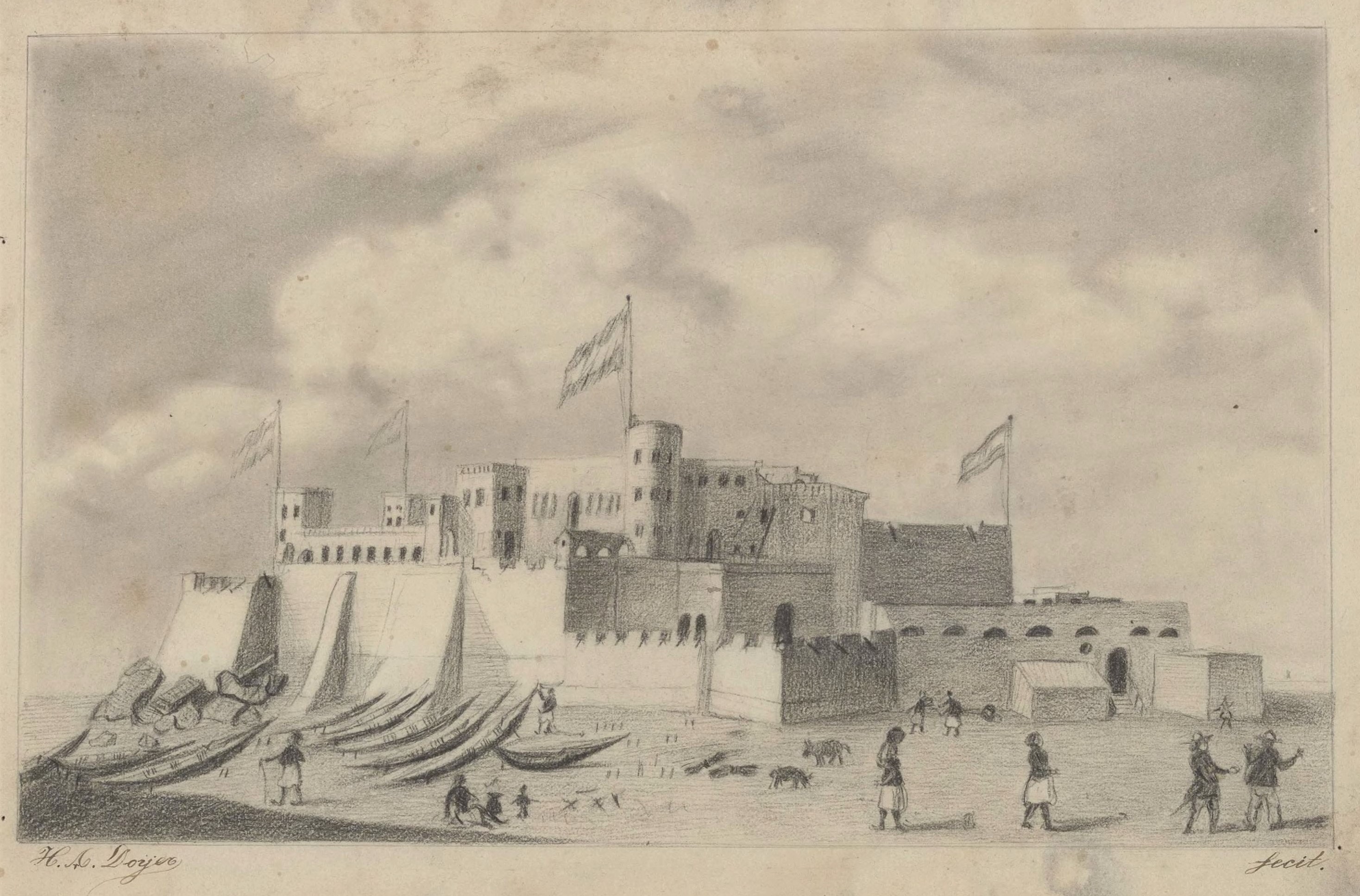- Nieuws
- Collectie
- Publicaties
- Jeugd
- Werkgroepen
- Platform
- KZGW
- Contact
- Nieuws
- Collectie
- Publicaties
- Jeugd
- Werkgroepen
- Platform
- KZGW
- Contact
uitgelicht
collectie-stuk

Op donderdag 3 november 2022, van 14.00 uur tot 17.00 uur organiseert het Zeeuws Genootschap in samenwerking met de Biblioteca Nacional in Rio de Janeiro het symposium ‘The West India Company in Africa, in particular in Elmina’. De leden van het Zeeuws Genootschap zijn hiervoor van harte uitgenodigd:
U kunt zich hier inschrijven (toegang gratis).
Klik hier voor het volledige programma.
Plaats van handeling: Nationaal Archief,
Prins Willem-Alexanderhof 20, 2595 BE Den Haag
NB: het symposium is ook online te volgen!
Het symposium is onderdeel van een omvangrijker programma in 2021, 2022 en 2023. Het doel is de geschiedenis van de West-Indische Compagnie (WIC), die in 2021 400 jaar geleden is opgericht, in de volle breedte onder de publieke aandacht te brengen. Hiertoe zijn vier symposia georganiseerd en een online expositie. De vier thema’s zijn: (1) De geschiedenis van de WIC, (2) De rol van Zeeland in de WIC, (3) Slavernij en (4) Cartografie. De eerste twee symposia zijn al geweest. Op 1 oktober is de eerste zaal van de online expositie geopend in het Zeeuws Museum in Middelburg.
The objective of this symposium is to look at the impact of the Dutch West India Company had in Africa, its actions there, the triangular trade, the company cooperation with African local leaders and its activities against Portugal.
The Dutch Chartered West India Company [WIC] was established on the 3rd of June 1621 with the purpose of eliminating Portuguese and Spanish competition in the Atlantic and in the America’s. The Dutch Republic was very interested in Brazilian products such as sugar, tobacco and Brazil-wood for its red dye. The trade in these products existed already before the WIC was set up, as was the presence of the Dutch on the Gold Coast in Africa, briefly, near Moree, in 1611 and 1612 .
However, because of the Iberian Union (1580-1640), trade with Portugal and its colonies, became more and more difficult. As a consequence, the first aim of the WIC was the conquest of Brazil for its sugar plantations. African slaves were needed for the sugar production. Thus, it was important to the WIC to be present in Africa. For this reason, the WIC conquered some Portuguese forts along western Africa, one of the most important places being Elmina in 1637, in the Gulf of Guinea. The gold mine, which gave the place its name, was nearly exhausted, but slave trade was possible and necessary for the sugar plantations and other activities in Brazil and later in Surinam and the Antilles.
More information will follow soon!
Subscribe here
Image: Fort Elmina, the headquarters of the WIC in West Africa, captured from the Portuguese in 1637, drawing 19th century H.A. Doijer (Zeeuwse Library (ZB, Manuscripts ZG, PLA 111C3)